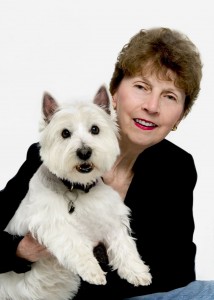Pet Talk
When Pets Need Geriatric Care
by Frances Goodman
Pets become seniors when certain changes begin taking place in the body related to the aging process.
Those changes indicate a need for more preventive care and monitoring, i.e., geriatric care.
But how can we tell when our pets reach “seniorhood?”
Although seven is generally the age at which cats and dogs reach that stage, thanks to the American Animal Hospital Association, we have some more specific guidelines, based on size and species.
Senior Status
According to the AAHA, here are the guidelines for when geriatric care should begin. Pets become seniors as follows:
- For cats, 8–10 years old.
- Small dogs less than 20 pounds at 9 to 13 years old.
- Medium dogs from 21 to 50 pounds at 9 to 11.5 years old.
- Large dogs from 51 to 90 pounds at 7.5 to 10.5 years old.
- Giant dogs weighing more than 90 pounds at 6 to 9 years old.
Signs of aging can be very subtle in pets, but according to the AAHA, 30 percent of senior pets have a hidden disease, 80 percent have dental disease and 62 percent of dogs age 10 years and older have symptoms of cognitive dysfunction.
Geriatric exams usually include a standard physical check, along with a blood chemistry profile; complete blood count; urinalysis, possibly endocrine (glandular) tests, and X-rays.
The AAHA recommends such exams be done twice a year for senior pets, instead of the recommended once a year exam for others.
Symptoms
Some symptoms creep up so slowly owners may not notice them. Something as seemingly insignificant as a change in the way a pet chews or sits can signal a problem.
Other signs might include: Does the pet take longer to get up? Are they drinking more water? Are they sleeping more?
The AAHA recommends keeping a record of physical or behavior changes as they occur and sharing them with the veterinarian. Things such as changes in coat and skin; gait; posture; oral health such as bad breath or difficulty in eating hard foods; weight; sleeping patterns; and hearing or sight.
Signs that a pet needs to be seen by a vet immediately include increased water consumption, inability to urinate or excessive or inappropriate urination, staring, and disorientation, to name a few.
Because we know our pet’s daily patterns and behavior best, observation is essential.
Preventive Care
How can we help pets have their best health in all stages of life? Here are a few ways:
- Feed high quality food with no corn, soybean, sugar, artificial color, chemical preservatives, or meat by-products;
- Brush their teeth with special pet toothpaste from the pet supply store;
- Be sure to provide them with regular and sufficient exercise;
- Do not let them become obese.
As pets age, obesity and oral disease are among the greatest causes of medical problems and discomfort. And both are among the few medical problems that can actually be prevented with the proper care and supervision.
~
Pet Quote for the Month: “Dogs are like kids, cats are like roommates.”–Cat Common Sense.
Frances Goodman is a professional dog obedience trainer and pet care writer. Got a question? Email her at fhpettalk@hotmail.com. See her ad this page.

